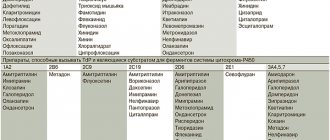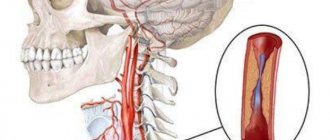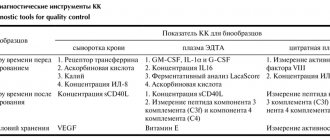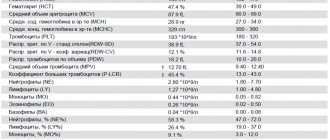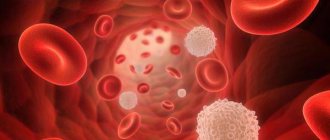Any changes in the balance of electrolytes in the body lead to pathological consequences. They must be taken into account when prescribing treatment. Hyperkalemia is a metabolic disorder caused by exceeding the normal concentration of potassium salts in human blood.
Potassium ions are positively charged and are in equilibrium with other electrolytes inside cells. Enter the human body with food. Excess is excreted by the kidneys. A condition such as hyperkalemia is possible only with the artificial formation of a significant amount of electrolytes or with the inability of the kidneys to remove accumulated potassium in the urine.
The International Statistical Classification (ICD-10) included the pathology in the subgroup of disorders of water-salt metabolism with code E 87.5. At the same time, this also includes conditions that cause changes in acid-base balance.
Where does excess potassium come from?
The causes of hyperkalemia are most often associated with improper electrolyte distribution (leave from cells into the extracellular space) or its accumulation.
Loss of potassium by cellular elements of the blood (leukocytes, erythrocytes and platelets) is observed with high leukocytosis, destruction of erythrocytes and platelets. Such hyperkalemia is called “false” because in other tissues the intracellular concentration does not change.
The mechanism of electrolyte redistribution from the cell to the extracellular space is typical for:
- states of acidosis (shift in blood pH towards acidification);
- insulin deficiency;
- overdose of drugs with beta-blocking effects;
- traumatic shock;
- consequences of chemotherapy for tumors, multiple myeloma, treatment of leukemia;
- severe alcohol intoxication;
- heavy physical activity;
- negative effects of drugs (cardiac glycosides, muscle relaxants with depolarizing properties).
The most common cause of hyperkalemia is renal pathology, diseases that impair the excretion of potassium in the urine and contribute to the accumulation of its content in the blood.
Etiological factors
The causes of hypokalemia are divided into three main groups based on the mechanism of development: due to insufficient intake, increased excretion and impaired potassium metabolism.
Among them are:
- Inadequate dietary intake in the absence/deficiency of potassium-containing products in the diet, during diets, due to pathological conditions accompanied by loss of appetite, after surgical interventions on the gastrointestinal tract;
- Increased need for potassium during pregnancy and the postoperative period;
- Clay use by some South American cultures. It interferes with the absorption of potassium in the gastrointestinal tract.
- Excessive exercise and excessive sweating increase the excretion of K+;
- Endocrine diseases (Cushing's syndrome, diabetes mellitus, primary hyperaldosteronism) accompanied by increased urinary excretion. Taking diuretics.
- Disturbances in the reabsorption of K+ ions into the blood and kidneys in diseases of the urinary system and metabolic acidosis, hyperinsulinemia.
- Excessive pathological losses of potassium in feces and vomit due to diarrhea, food toxic infections, acute pancreatitis, polyps and gastric fistulas. Uncontrolled use of laxatives. Anorexia.
- Taking medications: hormones (prednisolone, adrenaline, testosterone, insulin, adrenocorticotropic hormone), antibiotics (penicillin group, gentamicin), antifungal agents (amphotericin).
- Thyrotoxicosis, development of heart failure, liver cirrhosis.
- Familial paroxysmal myoplegia
- Congenital pathologies – Liddle, Fanconi, Barter syndromes.
- Burn disease.
- Features of conducting and interpreting ECG during pregnancy
Renal mechanism of hyperkalemia
The excretory capacity of the kidneys directly depends on:
- the number of working nephrons - the smallest structural elements, including tubules and glomeruli;
- sufficient sodium and water in the incoming blood;
- concentrations of the adrenal hormone aldosterone.
These components determine the required glomerular filtration rate.
Potassium accumulation begins when the rate decreases to 10-15 ml per minute (normally from 80 to 120) or urine output drops per day to less than a liter
Similar conditions occur in kidney failure caused by inflammatory and other diseases.
There is also a mechanism for blocking potassium release through the connection between renin and aldosterone. The fact is that aldosterone synthesis is activated by the hormone renin. A decrease in its amount automatically leads to hypoaldosteronism (Addison's disease). Similar conditions are caused by drugs (Indomethacin, Captopril), especially in older people and patients with diabetes.
The “renin” variant of kidney pathology is also characteristic of chronic nephritis, mechanical damage, diabetes mellitus, and sickle cell anemia.
Other drugs that affect the excretion of potassium by the kidneys include:
- group of ACE inhibitors,
- Spironolactone,
- Amiloride,
- Triamterene,
- Heparin.
Defective tubular filtration in acute renal failure is associated with direct damage (necrosis) and leads to rapid hyperkalemia.
Mineralocorticoid deficiency (hypoaldosteronism) may be primary due to damage to the adrenal glands or the result of a hereditary disorder of hormone synthesis (with adrenogenital syndrome, congenital deficiency of the hydrolase enzyme).
How do drugs interfere with potassium excretion?
The established mechanisms of impaired potassium excretion are associated with the effects of drugs on the renin-angiotensin-aldosterone system.
- Spironolactone inhibits the synthesis of potassium compounds in the collecting ducts of the renal tissue. As an aldosterone antagonist, it occupies sensory receptors (nerve endings) of cells. Protein complexes are formed: Spironolactone + receptor. This results in increased sodium excretion but retains potassium.
- Triamterene and Amiloride directly inhibit the production of potassium salts.
- The group of ACE inhibitors increases potassium concentrations by blocking Angiotensin II, and through it they reduce the synthesis of aldosterone. When taking ACE inhibitors in combination with chronic renal failure (CRF), potassium accumulation increases more rapidly.
- Heparin - has a direct blocking effect on aldosterone synthesis. Therefore, great caution is required when prescribing it to patients with renal failure due to diabetes mellitus, since hyperkalemia and acidosis aggravate the clinical picture.
Diseases such as nephropathy associated with kidney compression, sickle cell anemia, post-transplant condition, systemic lupus erythematosus cause a defect in the structure of the tubules, the release of potassium is delayed. Patients react poorly to the administration of Furosemide and Potassium chloride.
general information
Potassium is a mineral essential for our body; in fact, it plays an important role in maintaining hydrosalt balance and is the basis of important neuromuscular and cardiac functions. Potassium absorbed in the intestines enters the blood, and all its excess is simply filtered and excreted by the kidneys. When these organs cannot perform their functions properly, the level of potassium in the blood increases (a condition known as hyperkalemia ). However, other factors can contribute to elevated blood potassium levels, including increased food intake and certain medications.
High levels of potassium in the blood lead to very serious health consequences, especially in relation to the heart, musculoskeletal system and nervous system.
What symptoms indicate an increase in potassium in the blood?
Symptoms of hyperkalemia are caused by impaired transmission of nerve impulses to muscle tissue and changes in the properties of the myocardium (excitability and contractility).
Weakness increases to the point of paralysis
A patient with other chronic diseases complains of:
- muscle weakness;
- a feeling of heart failure in the chest, periodically a feeling of fading and stopping;
- nausea, lack of appetite.
Prolonged hyperkalemia leads a person to exhaustion.
In children, symptoms of hyperkalemia include:
- low mobility;
- flaccid paralysis in the muscles;
- bradycardia;
- decrease in blood pressure.
Diagnostics
It has been established that signs of hyperkalemia begin to appear in an adult at a plasma potassium concentration of 5–5.5 mmol/l. Less commonly, there are no symptoms.
For newborns, hyperkalemia is considered to be a serum element level of more than 6-7 mmol/l, and at the age of one month and older - 5.8-6 mmol/l. The factors causing hyperkalemia in children are no different from adults. But a physiological feature should be noted: in a child, excess potassium is excreted much more slowly due to kidney failure. It begins to be excreted in isolation (without sodium) only at the age of ten.
Peripheral paralysis may begin with attacks of muscle weakness and progress further. Similar phenomena are observed in the neurological hereditary disease - familial intermittent paralysis.
The cardiotoxic effect of potassium is expressed in rhythm and conduction disturbances
The ECG reveals different variants of the disturbed rhythm: from supraventricular tachycardia to ventricular fibrillation. Blockades at the level of atrioventricular conduction and dissociation of atrial and ventricular contractions are possible. The importance of hyperkalemia in the occurrence of asystole has been established.
Specific manifestations on the ECG are:
- increased amplitude of the T wave;
- wide ventricular QRS complex;
- the P wave may “disappear”;
- signs of atrioventricular block;
- arrhythmias.
Clinical studies have found that nodal and ventricular arrhythmias begin at calcium levels above 6.5 mmol/L.
Identification of unclear hyperkalemia in a blood test requires clarification of the cause. Additional types of examination are usually recommended to diagnose hidden renal pathology or diabetes mellitus.
Indirect signs may be:
- increased levels of creatinine, residual nitrogen in the blood;
- the presence of sugar and protein in the urine.
Ultrasound of the kidneys helps to exclude compression of the organ and identify urolithiasis and tumors.
Treatment of hyperkalemia is based on the degree of increase in potassium levels and clinical manifestations.
List of sources
- Nascimento L. Hyperkalemia and hypokalemia // Difficult diagnosis: In 2 volumes / Ed. R.B. Taylor, vol. 1. M., Medicine, 1992, p. 302-322.
- Manual of clinical laboratory diagnostics. Part 3: Clinical biochemistry/Ed. prof. M.A. Bazarnova, prof. V.T. Morozova. K., Vishcha school, 1986, p. 216-223.
- Sokovets T.G., Bogdanov E.I. Hypokalemic myoplegia//Kazan Medical Journal. 2013. pp.933–938.
- Molashenko N.V., Platonova N.M., Yukina M.Yu. and others. Primary aldosteronism. Collection of methodological recommendations. Ed. E.A. Troshina. Tver: Triad; 2021.
- Heitz U. Water-electrolyte and acid-base balance. Per. from English M.: Binom; 2009.
Treatment of mild symptoms
Mild signs include: plasma potassium levels of 5 to 6 mEq/L with no changes on the ECG. In therapy it is enough:
- Apply a hypopotassium diet.
- Discontinue medications that affect potassium levels.
- Add a loop diuretic to enhance elimination.
Sodium polystyrene sulfonate dissolved in sorbitol is recommended. It is a cation exchange resin that binds and removes potassium through intestinal mucus. It is prescribed orally or as an enema. The method is convenient in the treatment of hyperkalemia in children and patients with stomach diseases. The negative effect is an increase in sodium, since potassium is exchanged for sodium.
What foods reduce potassium? The diet must include:
- vegetables (carrots, cabbage);
- greens (onion, parsley, celery, asparagus, rhubarb);
- citrus fruits (lemons, oranges, tangerines);
- fruits (pineapple, plums, pears, grapes, peaches);
- berries (blueberries, blackberries, strawberries, cranberries).
Pasta and rice cereals have beneficial effects. It is recommended to add alfalfa sprouts to the salad.
It is not recommended to prepare quick meals from packages. They necessarily contain potassium chloride as a salt substitute.
To reduce the potassium content in vegetables, you can boil them; some of the potassium salts leave with the drained water.
You should limit your consumption of foods that contain high potassium content. These include:
- dairy products (whole milk, cottage cheese, yoghurts);
- fish (salmon, tuna);
- nuts and seeds (including pumpkin seeds);
- vegetables (tomatoes, beets) and products made from them (tomato paste, sauces);
- wheat cereal, bran;
- chocolate in any form;
- watermelon;
- linseed oil;
- soy products;
- raisins, dried apricots, pistachios, dates.
Infants are fed with special mixtures and food adjustments for the nursing mother.
Diet
There is no special diet, but adjusting the diet to include foods rich in potassium is a critical component of correcting hypokalemia. For this purpose, it is recommended to include in the diet dairy products (milk, cottage cheese and sour cream), legumes, oatmeal/buckwheat, mushrooms, potatoes, bread with bran, tomato, sea fish (mackerel, pollock, salmon, tuna, sprat), cabbage (cauliflower/white cabbage/broccoli), carrots, cucumbers, greens (parsley, spinach), seaweed, fresh fruits (peaches, bananas, kiwi, avocados, apricots), nuts, dried fruits (prunes, dried apricots, raisins), compotes, black tea, cocoa, tomato juice, freshly squeezed juices (grape, orange, carrot), chocolate.
Unnatural sugar-containing drinks (lemonade, Coca-Cola, Fanta, Pepsi) should be limited/completely excluded from the diet. The consumption of salt is also subject to restrictions, but at the same time, a salt-free diet is not allowed. It is important to consider that most of the potassium dissolves in water during heat treatment, so you need to boil foods in a minimum amount of water.
